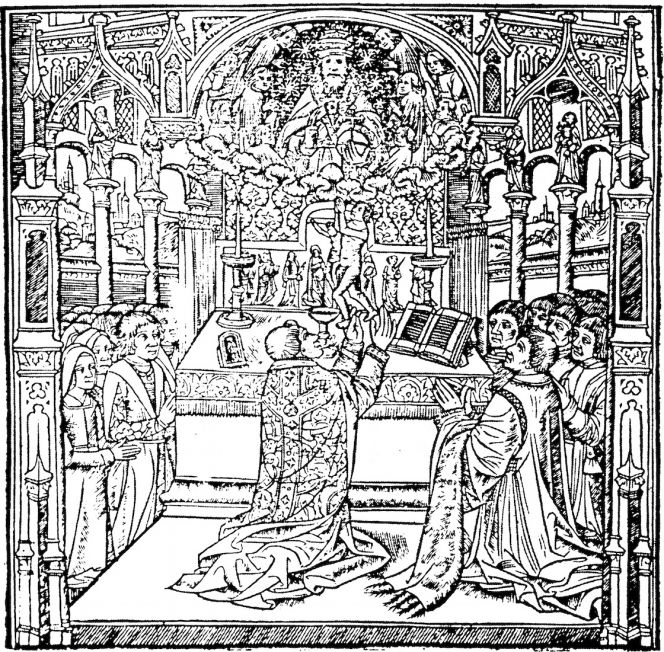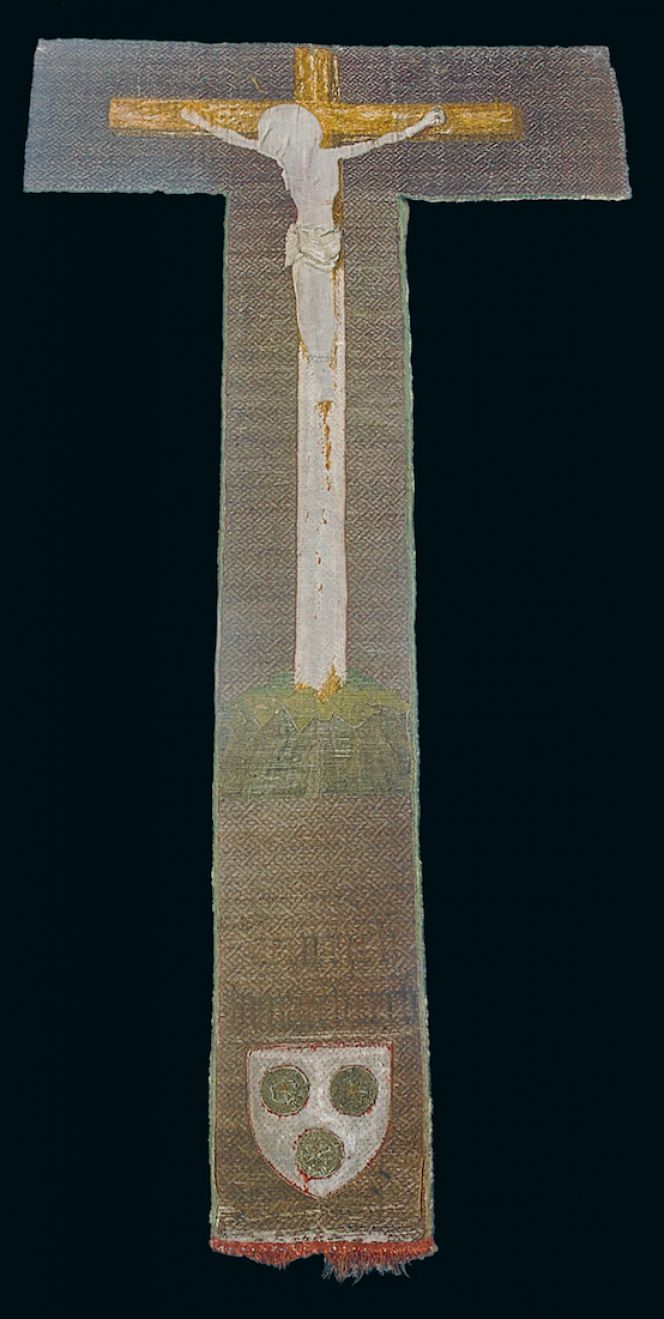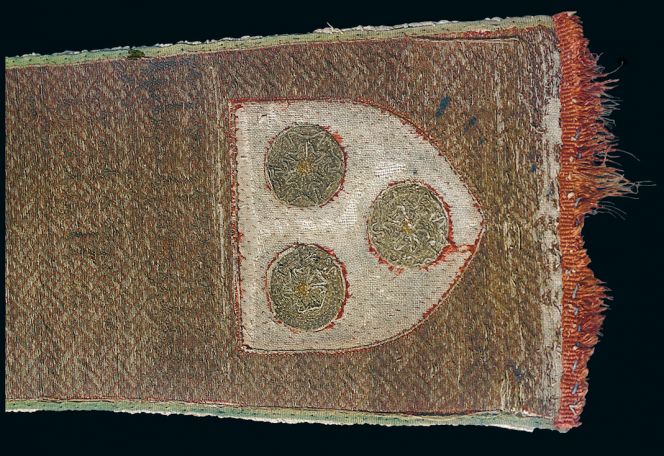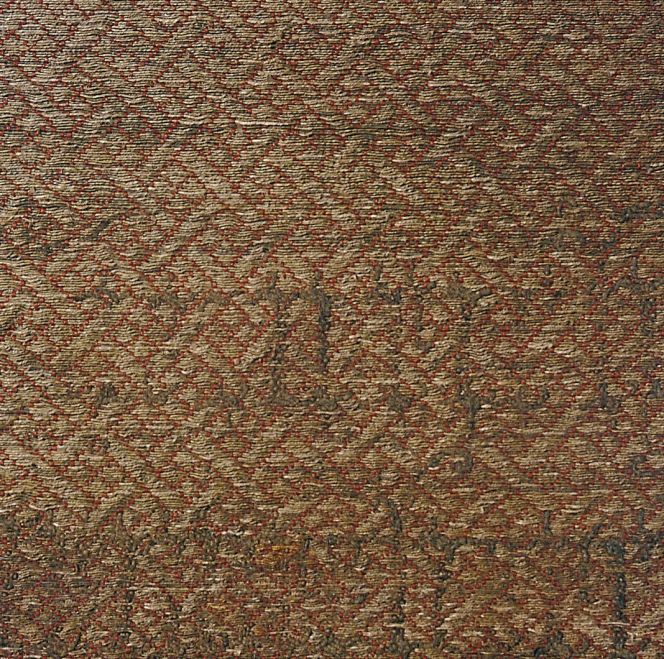ikfoundation.org
Promoting Natural & Cultural History



ESSAYS |
MEDIEVAL TEXTILES IN ST PETRI CHURCH
– an Introduction
Churches and museums in Sweden have an unusually rich selection of ecclesiastical textiles dating from the Medieval period compared to many other European countries, particularly well represented are 14th- to early 16th century Italian silks. This seventh essay on the Malmö area’s textile history will be the first of several studies describing the unique collection of vestments preserved and once used in the St Petri church. The collection includes 24 items: fragments of chasubles, copes, linen shirts, an altarpiece, one dalmatic, fringes, etc., which can be researched from various angles. For example, in the context of the exquisite silk and gold embroideries, the imported silk or velvet fabrics, the traditions and meanings of the biblical motifs or how these textile treasures have been cared for and handled for more than 600 years.
![The earliest known hand coloured print of the coastal town Malmö [Elbogen], dating from the 1580s, illustrates the dominant position of St Petri church. The church originates from the early 14th century when the gothic building was constructed on the site of an even earlier brick built church. During parts of the Medieval period and Reformation, Malmö was Denmark’s second largest town and became a Swedish region first in 1658. (Public Domain: Civitates orbis terrarum, Vol. IV, by G. Braun & F. Hogenberg).](https://www.ikfoundation.org/uploads/image/1-medieval-st-petri-1-c-1588-jpg-900x608.jpg) The earliest known hand coloured print of the coastal town Malmö [Elbogen], dating from the 1580s, illustrates the dominant position of St Petri church. The church originates from the early 14th century when the gothic building was constructed on the site of an even earlier brick built church. During parts of the Medieval period and Reformation, Malmö was Denmark’s second largest town and became a Swedish region first in 1658. (Public Domain: Civitates orbis terrarum, Vol. IV, by G. Braun & F. Hogenberg).
The earliest known hand coloured print of the coastal town Malmö [Elbogen], dating from the 1580s, illustrates the dominant position of St Petri church. The church originates from the early 14th century when the gothic building was constructed on the site of an even earlier brick built church. During parts of the Medieval period and Reformation, Malmö was Denmark’s second largest town and became a Swedish region first in 1658. (Public Domain: Civitates orbis terrarum, Vol. IV, by G. Braun & F. Hogenberg).The reason for such a rich selection of Medieval textiles in museum collections as well as in many churches has more than one explanation; and even if the Reformation took place in Sweden, the old vestments were often cared for and continued to be in use up to the 18th century, probably due to financial realities. However, the St Petri collection does have a history of its own due to the fact that Malmö became Swedish first in 1658, after an extended period of wars between the Danes and Swedes in the area. Furthermore, the Reformation was stricter in Denmark, and consequently, only a few ecclesiastical textiles dating back to before the early 16th century have been preserved in this country. In November 1529, for example, St Petri church in Malmö was affected, while a contemporary letter explained that adornments and images had been removed. Even so, this church has managed to preserve a selection of Medieval textiles up until today; the majority of those were discovered under a staircase in 1904 when the church was renovated. The remarkable find was an antependium that had been sewn together in a patchwork style – probably in the 16th or 17th century – from fragments of thirteen original vestments of silks, velvets, and embroideries. The pieces are today separated and presented in their original but fragmented state.
 In this seven drawer cabinet, the Medieval textile collection of St Petri church has been preserved since 1982. The considerable size of the cabinet also gives room for the larger vestments to be stored flat and protected by glass from dust and dirt. Additionally the climate in the room is suitable in temperature as well as humidity for vulnerable textiles. Photo: The IK Foundation, London.
In this seven drawer cabinet, the Medieval textile collection of St Petri church has been preserved since 1982. The considerable size of the cabinet also gives room for the larger vestments to be stored flat and protected by glass from dust and dirt. Additionally the climate in the room is suitable in temperature as well as humidity for vulnerable textiles. Photo: The IK Foundation, London.As a research project, I had the opportunity to make an extensive study of the Medieval ecclesiastical textiles, etc, from St Petri church in 1999-2000. This work resulted in a 75-page article in Swedish and a full image documentation by the photographer Lars Andersson. However, the collection had already, between 1979 and 1982, been meticulously conserved and analysed by the textile historian Inger Estham and conservator Margit Wiklund at the Swedish National Heritage Board. They were both responsible for the work with the delicate fragments and the arrangement for permanent storage in the cabinet shown above.
The “modern history” of Medieval fabrics started even earlier when the re-discovered patchwork style antependium in 1904 was transported to the Malmö Museum. Here, the fragments were separated and put together partly in another way. The combination/design of the patchwork antependium was changed again in 1919 when it was sent to “Pietas” – a Swedish textile conservation and research institute founded in 1908. Where and how the preserved fragments were kept in St Petri church after the conservation made in 1904 as well as in 1919 is unknown. However, prior to the most recent conservation from the late 1970s, the textiles were in poor condition and displayed as fully exposed to daylight. Furthermore, in 1941 two other textiles were re-discovered in a cupboard dating from the 17th century, consisting of two beautifully embroidered altar cloths. One in red, green and gold sewn on fine linen dating from the early 16th century and the other made about a hundred years later in reddish silk on linen.
 This early print included in Missale Lundense dated 1514, gives visual examples of the ecclesiastical textiles’ traditional use. The centred bishop’s/priest’s chasuble probably illustrated a richly embroidered cross stitched on an expensive figured silk, while a long shirt or alb was worn under the chasuble. Notice that the altar is covered by an altar cloth with a decorative fringe. (Public Domain: Hopyl, Wolfgang, Missale Lundense, Paris, 1514, p. 1).
This early print included in Missale Lundense dated 1514, gives visual examples of the ecclesiastical textiles’ traditional use. The centred bishop’s/priest’s chasuble probably illustrated a richly embroidered cross stitched on an expensive figured silk, while a long shirt or alb was worn under the chasuble. Notice that the altar is covered by an altar cloth with a decorative fringe. (Public Domain: Hopyl, Wolfgang, Missale Lundense, Paris, 1514, p. 1).Below is a textile fragment with quite a detailed history from the St Petri collection displayed over three images, once part of a late Medieval chasuble used in this church. The vestment was donated by the king’s bailiff Heinrich Dringenberg in Malmö, a wealthy man who, among other work, also arranged for the building of a private chapel within the church in the late 15th century.
 A preserved cross with a partly fragmented crucifix dating from the second half of the 15th century, which originally decorated a chasuble in St Petri church. The image of Christ was made of a creme-white silk fabric in an appliqué technique, at a close study it is also possible to see stitching in grey for the nail and red from the wound on the right hand. Even the “plaiting motif” of the fabric surface was embroidered with a very fine golden thread assisted by red stitching of silk in so-called laid work. This complex piece is believed to have been made by a professional embroiderer on the Continent. The donor’s name of this vestment – Heinrich Dringenberg – was stitched in Gothic lettering and his coat of arms with three golden roses was inserted on an originally red ground. This part of the work could have been added by the same embroiderer. Height 104 cm & width 16 cm. Photo: The IK Foundation, London.
A preserved cross with a partly fragmented crucifix dating from the second half of the 15th century, which originally decorated a chasuble in St Petri church. The image of Christ was made of a creme-white silk fabric in an appliqué technique, at a close study it is also possible to see stitching in grey for the nail and red from the wound on the right hand. Even the “plaiting motif” of the fabric surface was embroidered with a very fine golden thread assisted by red stitching of silk in so-called laid work. This complex piece is believed to have been made by a professional embroiderer on the Continent. The donor’s name of this vestment – Heinrich Dringenberg – was stitched in Gothic lettering and his coat of arms with three golden roses was inserted on an originally red ground. This part of the work could have been added by the same embroiderer. Height 104 cm & width 16 cm. Photo: The IK Foundation, London. A close-up of Heinrich Dringenberg’s coat of arms with three golden roses – on this very exclusive 15th century work in silk and gold. Photo: The IK Foundation, London.
A close-up of Heinrich Dringenberg’s coat of arms with three golden roses – on this very exclusive 15th century work in silk and gold. Photo: The IK Foundation, London. A second close-up illustrates that the surface of the cross itself, in a most exquisite way is fully covered with laid work of gold and red silk, and finished off with a matching silk fringe. Photo: The IK Foundation, London.
A second close-up illustrates that the surface of the cross itself, in a most exquisite way is fully covered with laid work of gold and red silk, and finished off with a matching silk fringe. Photo: The IK Foundation, London.Notice: A large number of primary and secondary sources were used for this essay. For a full Bibliography and a complete list of St Petri church textiles, see the Swedish article by Viveka Hansen.
Sources:
- Hansen, Viveka, ‘Kyrkliga textilier i Malmö – från medeltid till barock’, Elbogen pp. 61-135. 2000.
- St Petri Church, Medieval Church Collection, Malmö, Sweden (researched in 1999 & 2000. If not otherwise stated, all textile fragments are part of the St Petri collection).
ESSAYS
The iTEXTILIS is a division of The IK Workshop Society - a global and unique forum for all those interested in Natural & Cultural History from a Textile Perspective.
Open Access essays - under a Creative Commons license and free for everyone to read - by Textile historian Viveka Hansen aiming to combine her current research and printed monographs with previous projects dating back to the late 1980s. Some essays also include unique archive material originally published in other languages, made available for the first time in English, opening up historical studies previously little known outside the north European countries. Together with other branches of her work; considering textile trade, material culture, cloth manufacturing, fashion, natural dyeing and the fascinating world of early travelling naturalists – like the "Linnaean network" – from a Global history perspective.
For regular updates, and to make full use of iTEXTILIS' possibilities, we recommend fellowship by subscribing to our monthly newsletter iMESSENGER.
been copied to your clipboard




– a truly European organisation since 1988
Legal issues | Forget me | and much more...
It is free to use the information/knowledge in The IK Workshop Society so long as you follow a few rules.
 LEARN MORE
LEARN MORE








